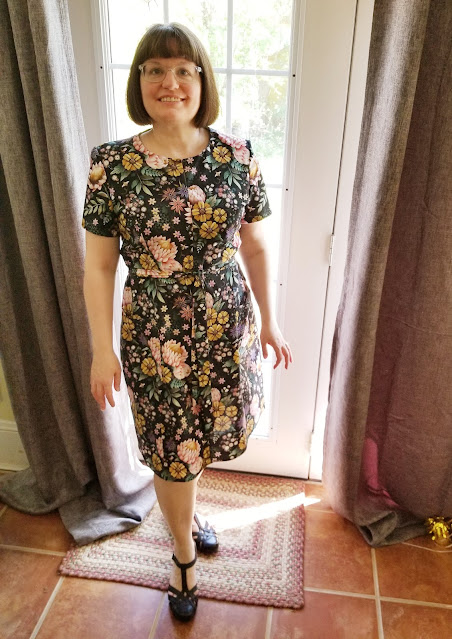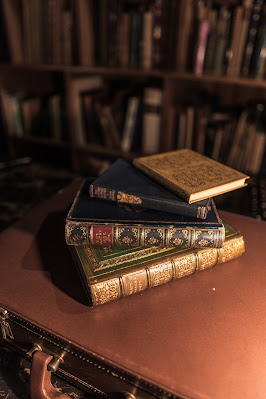Well, I immediately thought of a project I've been considering for quite some time. My first pattern I ever bought was this McCalls 9309 (©1984) for my home ec. project in Grade 9. I still own it, and have been thinking about remaking it to current sizing standards ;) I finally got around to it.
 |
| The lady on the right has my Grade 9 haircut ;) The one on the left has my current haircut! |
I had made it in the 80s in a soft t-shirt jersey in a mint & white tie dye. To modernize it, I chose a heavier blue and yellow print in my stash, which has a slightly sturdier hand than the original and a more current appearance; I'd pulled it out as part of my blue and yellow Spring sewing plans. I had just enough to cut out the dress and sash - I decided to cut two sash pieces and sew them together so that the unprinted back of my fabric isn't showing when I tie it. Fortunately I could squeeze that all on with a centre seam in the sash rather than cutting on a fold.
One neat element of this pattern is that you sew a hook to the inner sleeve along the upper seam, just about at the bicep level. Then you make a thread loop at the inner sleeve hem, so that if you want to change the look to have short sleeves you can just hook them up on the inside and voila. A different look!
Since I'd already made some biggish changes I also decided to pop in some pockets. I stole both the pocket and neckline finish from my Marcy Tilton 9329 -- the pockets are just one piece and stitched to the front of the dress, while the neckline facing is topstitched down 1" from the neckline. Both of these additions were really useful ones.
I think that the rejigging of this pattern worked well! And the trip down memory lane was a treat. I was sure I still had a photo of myself in the original, but all I could find was a group photo from my Grade 9 Grad. You can see most of the dress ;)
This was an enjoyable project that the PatternReview contest gave me the push to actually get done. You can probably pop on over to PR and vote for me in the next few days ;) In any case, I love the dress and feel that it modernized effectively.
 |
| Channelling the 80s inspiration with two of my fave albums from the mid-80s: Jane Siberry & Howard Jones |




















.jpg)
.jpg)
.jpg)
.jpg)
.jpg)
.jpg)
























